|
Tugboats that use a rope hawser
to make tow are known as rope boats. They are still used today on
bays and rivers for towing barges of general cargo. It's a labor
intensive towing technique but it is simple to set up a rope boat because
no towing winch and the related machinery is necessary.

All that is
needed is a towing hawser, a sturdy capstan, H-bits, and a few tools to
outfit the stern of one of these type boats.
|
The hawser is usually a full
coil (600 feet) of nylon line, sometimes more. Traditional looking three strand
line can be used but most boats use plaited line, like the image on the
right. The line is thick. If you reach down and grab the
calf of your leg, that's almost what it fells like to grip one of these
lines.
|
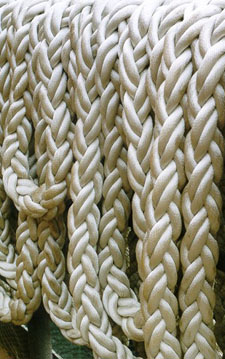 |
Before the tow is made, the
hawser is carefully coiled on the stern. In this example the
hawser has been loosely coiled on the "hawse rack" in the shape of the
stern. Sometimes a square rack is built of wood on the deck of the
stern where the hawser is coiled tightly into a square shape from the
the outside edge to the middle, with each new layer starting one row inside the last to form a
pyramid.
|
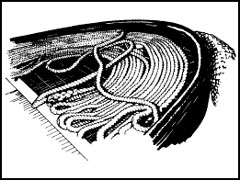 |
|
|
| |
|
|
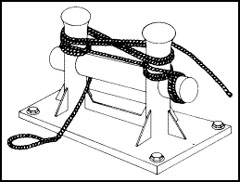 |
This is the "H" bit on the
stern. This is the connection point for the tug and the hawser.
The crew make the the rope fast in the manner illustrated and then by
taking some turns off, may pay out more hawser to set the tow at a proper
distance behind the tug.
|
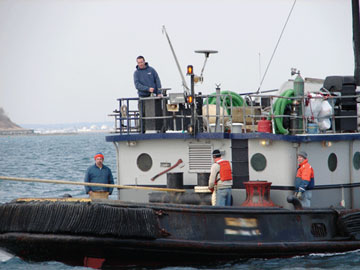
This would be
a crew "stringing out" the tow using the bitts.
|
|
After the rope hawser is
paid out to the proper distance, usually a few hundred feet from the
tug, chafing gear is applied to keep the hawser from being chafed by the
movement of the tug's stern rail against the line. Chafing gear
can be made up as simply as wrapping the rope in layers of canvas and
line but this must be changed frequently on a long trip so most chafing
gear is made from wood, or pieces of thick rubber fender material, split to accept the rope.
Either device is tied to the hawser at a point that
will hold it in
position over the rail.
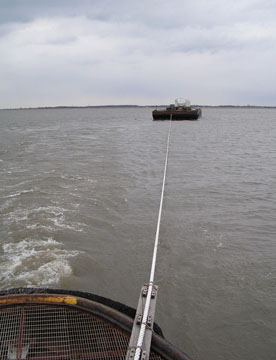
|
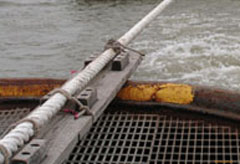 |
This is a
typical chafing board made up to the hawser.
It rides along the stern rail and prevents the
rope from wearing against the rusty steel.
|
|
When it's time to retrieve
the tow, a capstan is used to haul in the hawser. The crew coils
the line down as the capstan slowly brings the tow closer to the stern.
In this old picture the capstan can be seen just below the "H" bit.
This old picture also illustrates how difficult the job can be when the
weather is bad.
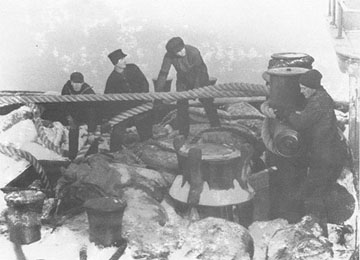 |